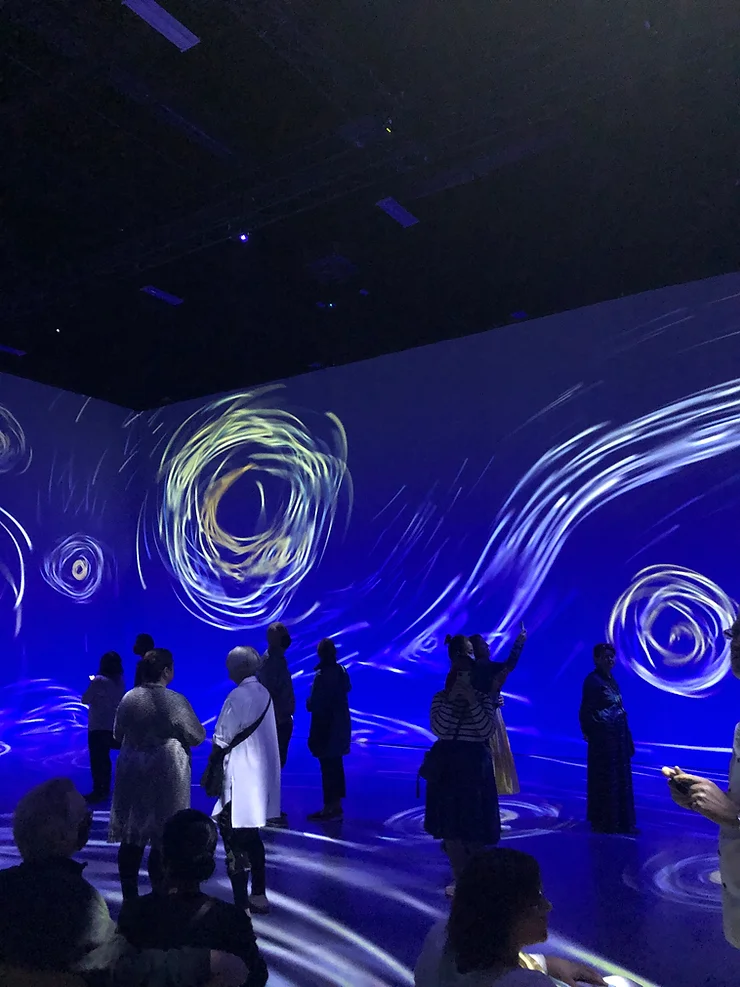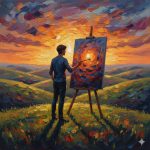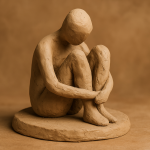In recent months, Calgarians have started to resume a somewhat normal way of life following a year and a half living in a global pandemic. Families are getting together, workers are returning to their offices, and public gatherings are a thing again. By no means has COVID-19 left our lives and stopped being a recurring source of anxiety, but public spaces are indeed reopening, and many people are eager to take in new experiences with their friends and families.
The traveling exhibition, Beyond Van Gogh: The Immersive Experience, opened at Calgary’s BMO Centre on July 30. The exhibition tells Vincent Gogh’s life story through his paintings and the letters he and his brother, Theo, wrote to each other throughout their lives. Moving images are projected all around the spectator – the walls, ceiling, floor, everything – as snippets of Van Gogh’s correspondence are read aloud to a background of symphonic music. We are given a 360° multi-sensory experience along with insight into the complex mind of a visionary and troubled artist.
Calgary is lucky to be one of the Canadian cities to experience the traveling exhibition, which has already toured Europe and the U.S. The novelty of the exhibition, showing Van Gogh’s most famous pieces displayed in such a unique way, is sure to delight visitors of all ages. Whether you are a frequent visitor to art galleries or not, the fun and engaging way that the exhibition was designed can surely appeal to just about everyone.
While the exhibition looks ‘beyond’ Van Gogh, it also shines a light directly on him and explores the ideas, thoughts, and creations of a complicated person. Van Gogh is certainly regarded as one of the most talented and imaginative artists of all time. Unfortunately, he is also remembered for his severe struggles with mental illness. Experts today have argued over what Van Gogh’s official diagnosis should have been. Some suggest he suffered from bipolar disorder, others schizophrenia. His internal struggles came out in his paintings, and they serve as a legacy of both his artistic genius and his inner turmoil.
His work was his emotional outlet. It was his way of communicating to the outer world what was going on in his internal one. His art was probably one of the few things that helped and gave him comfort during his darkest times. Unfortunately, he, and many others like him at that time, were failed by society’s lack of understanding about mental illness, and there were few resources available to him. He tragically died by suicide on July 29, 1890. Now, 131 years later nearly to the day, this exhibition has opened in Calgary.
In 2021, we know a lot more about mental illness and the importance of taking care of our minds as much as our bodies. Though there is still a long way to go in terms of understanding and treating mental illness, there have been many advances in recent years, both in science and academic research, as well as the ways that mental health is talked about. Some of the stigma that mental illness has carried for so long is starting to be replaced with open dialogue. More and more people are being vulnerable with each other and sharing their personal struggles, often coming to the realization that many of those around them have been going through the same things as well.
The COVID-19 crisis certainly challenged everyone’s mental health. It has been traumatic for young people who lost the familiarity of school and their friend groups. It was heartbreaking for older people who had to be isolated from loved ones in their final years. It has been draining on healthcare workers, first responders, teachers, and all frontline workers. Though it has been difficult, even unbearable at times, it has also forced a crucial shift in the way we think about mental health. Many people are no longer willing or able to hide their internal struggles. Many have bravely opened up about the difficulties they have faced and are realizing they don’t need to go through these things alone.
As we recover from the last year of COVID and enter the next stage of whatever normalcy looks like for us, we will need to go through a healing process. We need to find ways to take care of ourselves and recover from all of the loss we experienced. Therapy and counseling are very useful, and reading self-help or personal development books can help too. One thing that we should focus on as well is taking in beautiful, creative, and inspiring experiences that can make us feel good and remind us of the beauty and complications of life.
Though many people may not immediately think of it, arts and culture are important tools in taking care of our mental health. Giving ourselves a chance to have meaningful experiences through art—whether it is a thought-provoking painting, a moving piece of music, a funny film, or an inspiring poem—is a powerful way to go through this healing process. Having moving and pleasurable experiences through art is something that we should all incorporate into our lives, and we can turn to museums, public art spaces, galleries, libraries, or online platforms to have these awakening experiences.
The Beyond Van Gogh exhibition could not have come at a more perfect time, when Calgarians are recovering from a traumatic year and seeking meaningful experiences that they can have on their own or with friends and family.
There is science behind the link between the experiences we have when interacting with art and the impact it has on our mental health. The term neuroaesthetics was first used by neuroscientist Semir Zeki in the late 1990s and was used to describe the study of people’s neural responses to art. The field of study helps to uncover how exposure to art and certain art therapies can be used to treat neurological disorders like Parkinson’s and Alzheimer’s, as well as mental illnesses like depression.
“The truth is that aesthetic experiences—and the arts—are hard-wired in all of us. They are evolutionary imperatives, encoded in our DNA as an essential part of our humanity. And they are fundamental to our health, well-being, and learning.” – Magsamen, 2019.
Art is an important part of the human experience, and immersing ourselves in things that can excite, inspire, and comfort us will be an important part of our recovery from a difficult year and a half. If you’re in Calgary this summer, go see the Beyond Van Gogh exhibit, or visit a museum or art gallery. Take in an outdoor music festival, or read a novel by yourself in the park.
Taking part in artistic experiences has always been an important, impactful way to feel grounded and in the moment. At this unusual time in our lives, when we have all collectively been through such an exhausting ordeal, these sorts of experiences with beautiful and creative pieces of art can help us through.
If you do visit Beyond Van Gogh, think about how the artist’s work makes you feel. This new, creative interpretation of his masterpieces will expose people to his art in a way that it hasn’t really been experienced before. It will open the eyes of new generations to the power of works that were created well over a century ago. It will move people, it will entertain people, and both experiences are equally important. It is also important to remember the person who created these masterpieces and acknowledge the unbearable illness that he went through in his private life. The fact that his work can now bring people joy and healing after a difficult year is an important legacy to remember.
Magsamen, S. (2019, July). Your Brain on Art: The Case for Neuroaesthetics. PubMed Central (PMC). https://www.ncbi.nlm.nih.gov/pmc/articles/PMC7075503/



